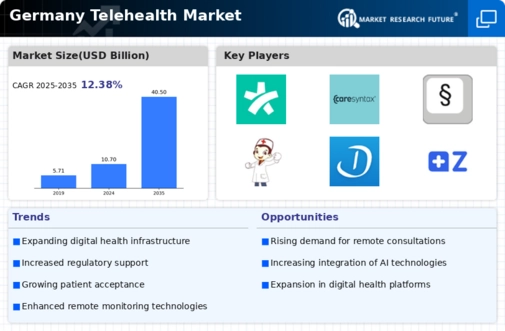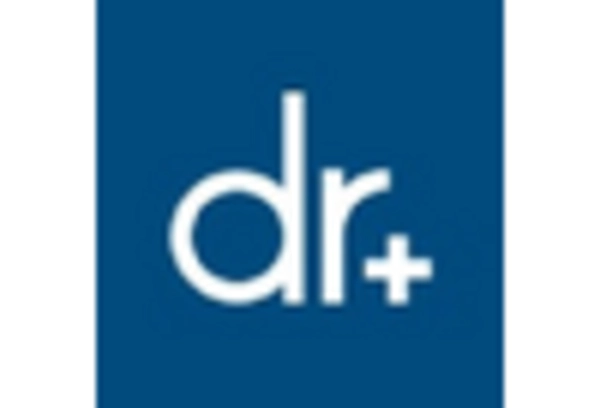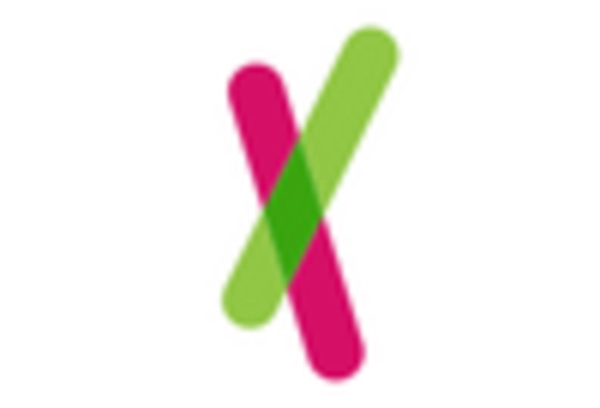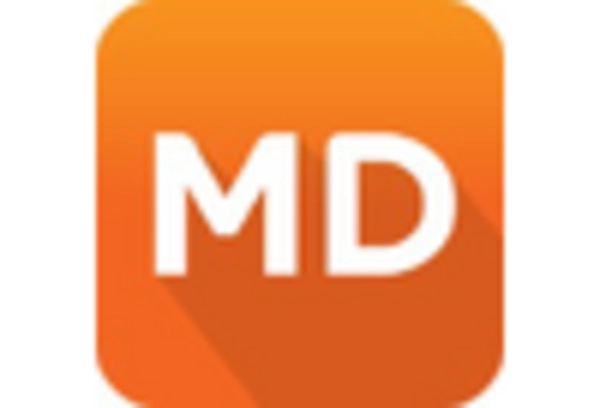Increased Focus on Preventive Care
The telehealth market in Germany is witnessing an increased focus on preventive care, which is reshaping healthcare delivery. Healthcare providers are leveraging telehealth services to promote preventive measures, such as regular health screenings and wellness programs. This shift is partly driven by the recognition that preventive care can reduce long-term healthcare costs and improve patient outcomes. As of 2025, it is estimated that preventive care initiatives facilitated through telehealth could lead to a reduction in hospital admissions by up to 15%. This proactive approach not only benefits patients but also aligns with the broader goals of the healthcare system in Germany, emphasizing the importance of early intervention and health maintenance. Consequently, this focus on preventive care is likely to enhance the telehealth market.
Technological Advancements in Healthcare
The telehealth market in Germany is experiencing a surge due to rapid technological advancements. Innovations in digital health technologies, such as artificial intelligence and machine learning, are enhancing the efficiency of telehealth services. These technologies facilitate remote patient monitoring and improve diagnostic accuracy. As of 2025, the market is projected to grow at a CAGR of approximately 20%, driven by the increasing integration of advanced technologies in healthcare. Furthermore, the proliferation of smartphones and wearable devices is enabling patients to access telehealth services more conveniently. This trend indicates a shift towards a more patient-centric approach in the telehealth market, where technology plays a pivotal role in delivering healthcare services effectively.
Supportive Policy Environment for Telehealth
The telehealth market in Germany benefits from a supportive policy environment that encourages the adoption of telehealth services. Recent legislative changes have facilitated reimbursement for telehealth consultations, making it financially viable for both providers and patients. As of 2025, approximately 60% of telehealth services are now covered by health insurance plans, which has significantly increased their accessibility. This supportive framework is crucial for the growth of the telehealth market, as it reduces barriers to entry for both patients and providers. Furthermore, ongoing discussions among policymakers regarding the expansion of telehealth regulations suggest a commitment to fostering innovation in healthcare delivery. This environment is likely to stimulate further investment and development within the telehealth sector.
Rising Demand for Convenient Healthcare Solutions
The telehealth market in Germany is significantly influenced by the rising demand for convenient healthcare solutions. Patients are increasingly seeking accessible and flexible healthcare options that fit their busy lifestyles. This demand is reflected in the growing number of telehealth consultations, which have reportedly increased by over 30% in the past year. The convenience of accessing healthcare services from home or on-the-go is appealing to many, particularly in urban areas where time constraints are prevalent. As a result, healthcare providers are expanding their telehealth offerings to meet this demand, indicating a shift in how healthcare is delivered. This trend is likely to continue, further propelling the growth of the telehealth market in Germany.
Growing Integration of Telehealth in Traditional Healthcare
The telehealth market in Germany is increasingly being integrated into traditional healthcare systems. This integration is characterized by collaborations between telehealth providers and established healthcare institutions, which aim to enhance service delivery and patient care. As of November 2025, approximately 40% of hospitals in Germany have adopted telehealth solutions as part of their standard care protocols. This trend indicates a recognition of the value that telehealth brings in terms of efficiency and accessibility. By incorporating telehealth into traditional practices, healthcare providers can offer a more comprehensive range of services, thereby improving patient satisfaction and outcomes. This integration is expected to continue evolving, further solidifying the role of telehealth in the healthcare landscape.

















Leave a Comment